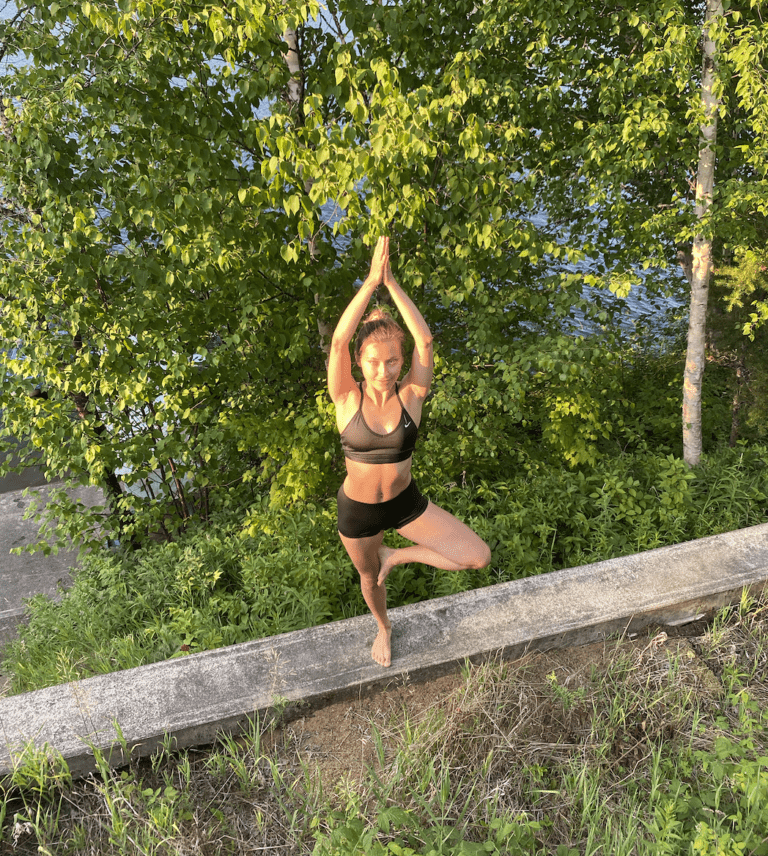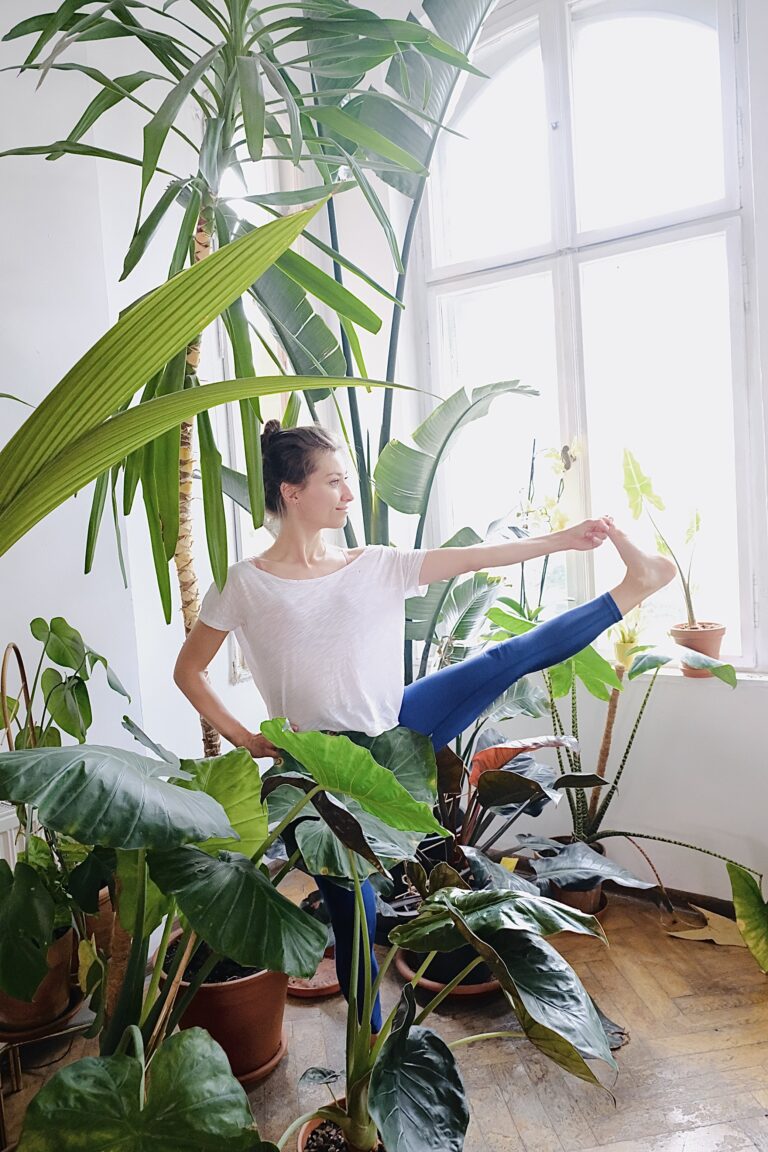How to start: Beginners guide to YOGA (part 1)
HOW YOU START YOUR JOUNEY WITH YOGA? Part 1: BEFORE YOU BEGINN
As a yoga teacher, I often encounter the common question: “How can I start my yoga journey?” Many wonder if they need to invest in pricey accessories featured on YouTube, or if simply joining any yoga studio in their district is sufficient.
In today’s world, saturated with endless information, especially within the yoga community, finding a starting point can be overwhelming. Therefore to help you, I’ve prepared my own guideline for everyone who wants to start yoga but don’t know HOW. Today, I’ll dive into the crucial preparation phase—what to do before taking your first yoga class. Because understanding these steps are fundamental to begin a beautiful process called YOGA.
CLOTHES
At first, let’s talk about the outfit! You’ve probably come across advanced yogis performing advanced poses, wearing fitting leggings, cropped tank tops, or just sports bras (women). These choices are often preferred by yoga instructors as they enhance visibility, allowing students to observe the postures more clearly than if they were in loose clothing.
However, as a beginner yogi, your primary focus should be on COMFORTABLE clothing. You can simply choose baggy pants, a loose-fitting t-shirt, or comfortable shorts—anything that lets you move freely without constraints. In the realm of yoga, where you’ll be bending and stretching in various directions so, comfort is key.
Of course, if you feel great in leggings and a sports bra, go ahead and embrace that choice!
YOGA MAT
Let’s talk about the most crucial prop for your yoga journey. A reliable mat is essential for a seamless beginning in the world of yoga, providing a stable foundation for your practice. Opt for a mat with a sticky texture to prevent slipping during certain positions, and a moderate thickness to maintain balance, especially when standing on one leg.
Yoga mats come in various materials such as caoutchouc, PVC, cork, TPE, and more. Personally, for my everyday yoga practice I prefer using my eco-friendly PVC mat, which is 4.5mm thick. It offers a perfect balance with a good grip, firmness without being too hard or too soft. It’s ideal for both stability and comfort for my knees.

If you’re unsure about which yoga mat to choose, consider visiting a large sports market where you can test different options. This is how I started, and now I proudly own three yoga mats tailored for specific purposes: one for home practice, another for studio sessions or outdoor use in the park (mat I take out), and a super-light one for travel convenience.
OTHER YOGA ACCESSORIES
Let’s explore the world of yoga accessories—beyond the yoga mat. While the mat is a fundamental, there are additional props designed to enhance and ease your practice, such as blocks, straps, blankets, bolsters, wheels, and more. These accessories were invented to ease and support your yoga practice. Moreover, given that each body is unique, not just physically but also in terms of experiences and traumas, certain parts may require an extra help.
Consider the example of touching one’s toes; some may achieve it effortlessly, while others may struggle even after months of stretching. In such cases, using a block can provide additional grounding and reduce unnecessary stress from that uncomfortable experience.
If you choose to practice in a yoga studio only, you may not need to invest in these props, as most yoga schools provide them for students. However, if you decide to start practicing at home, consider getting at least two blocks for comfort. This ensures that your yoga practice remains as supportive and enriching as your studio sessions.

FIND YOUR STYLE
Starting your yoga journey involves finding the style that resonates with you. In the realm of Hatha Yoga, diverse options cater to various preferences. Ashtanga and Vinyasa are dynamic styles, emphasizing continuous movement, while Traditional Hatha involves longer poses with breathwork and meditation. For those seeking a stretch-focused approach, Yin and Restorative Yoga offer a passive experience.
Classes accommodate all levels, from beginners to advanced or open-level classes suitable for everyone. Contemporary yoga includes also hybrids like Gentle Yoga (Hatha + Yin + Meditation/breath work) and Power Yoga (Vinyasa with fitness exercises). Moreover, you can find specialized classes, such as Healthy Spine Yoga, Oncology Yoga, Yoga for seniors, or hybrids like Yogilates (Yoga + Pilates).
If uncertain, seek advice from your teacher, explore online previews, or opt for a trial class to find your ideal fit. This ensures your yoga practice aligns with your preferences for a fulfilling experience.
FIND AN EXPERIENCED TEACHER
When you start your journey with yoga, select an experienced teacher. Why? Drawing from my own teaching experience, during my first year I struggled to adapt sequences to beginner’s needs. It’s something I’ve also experience while attending new teachers’ classes. It took me several months to become more mindful, selecting the right language and responding to challenges my students felt in several poses.
Now, after 8 years of teaching, I have the ability to create a secure space on the mat. I prioritize slow pacing over rushing through sequences, and observe students’ comfort levels, providing hands-on adjustments for optimal alignment. When choosing a teacher, check if they exhibit a similar mindful approach to ensure a supportive and enriching yoga experience.
ONCE YOU’VE DONE YOUR RESEARCH – BOOK YOUR TRIAL YOGA CLASS
When you astart your own yoga journey, check if studio you go to offers free or reduced price trial class. In my Yoga with Paulina Loft studio this year, I’ve decided to offer all new students a FREE TRIAL class upon getting a membership card. What does this mean? If you choose me as your yoga teacher and commit to regular attendance, you can purchase a membership pass of your choice after the first class, and the trial is on me. Alternatively, if you prefer a more flexible schedule, you can opt to pay the single class price. Check my full price list HERE.
CONCLUSION
I understand the importance of finding the right “vibe” with your teacher. Some seek a slow flow with precise alignment, while others prefer a dynamic, physically demanding class. Take the time to explore and find the perfect fit!
Remember, don’t be discouraged if you can’t master everything during your trial. Progress takes time—your body, mind, and spirit all need it. If the teaching resonates with you, and you leave the class with a big smile, that’s what matters most. Advanced poses will come in time, bringing with them improved health, happiness, and inner peace.
